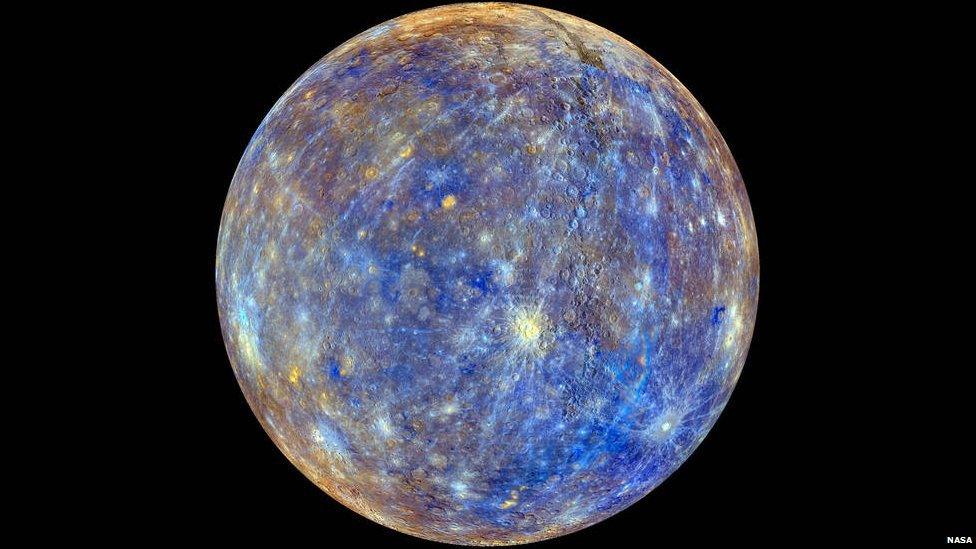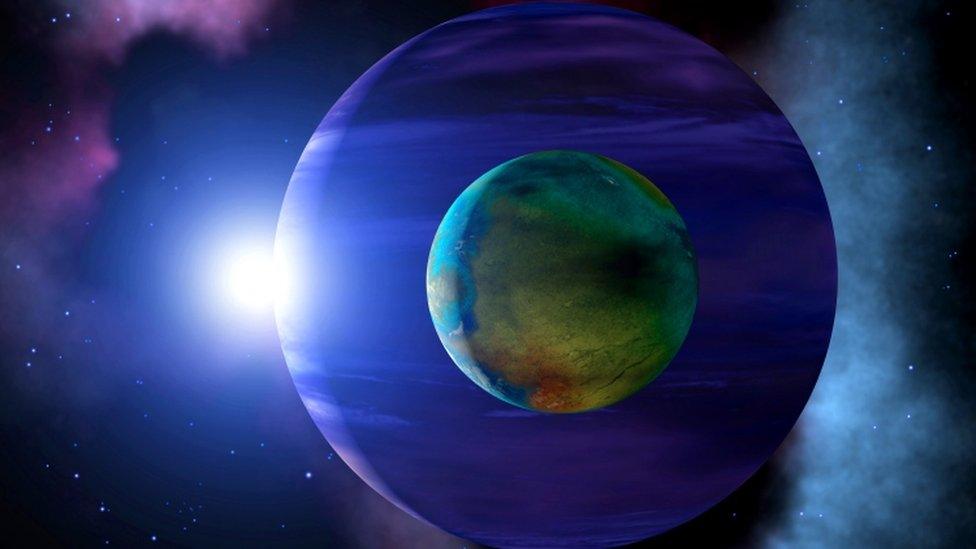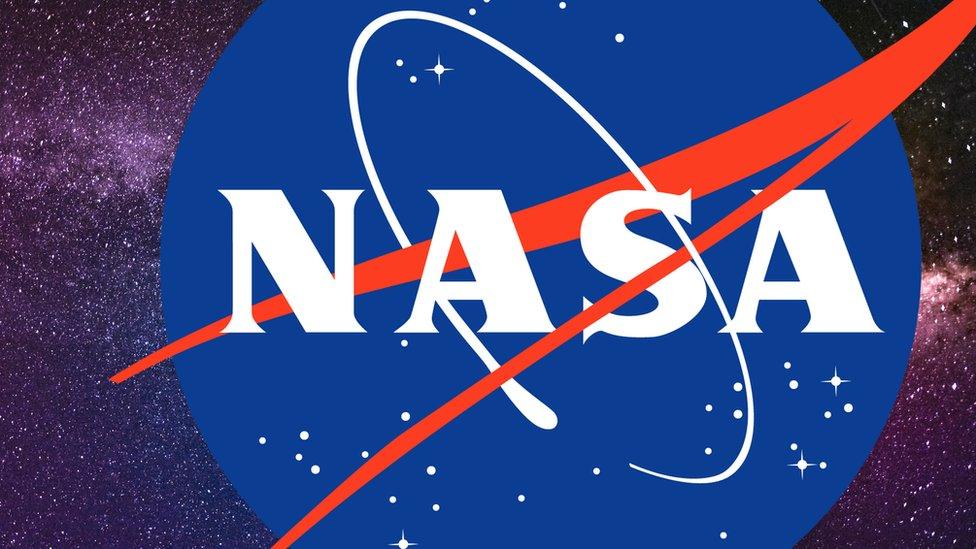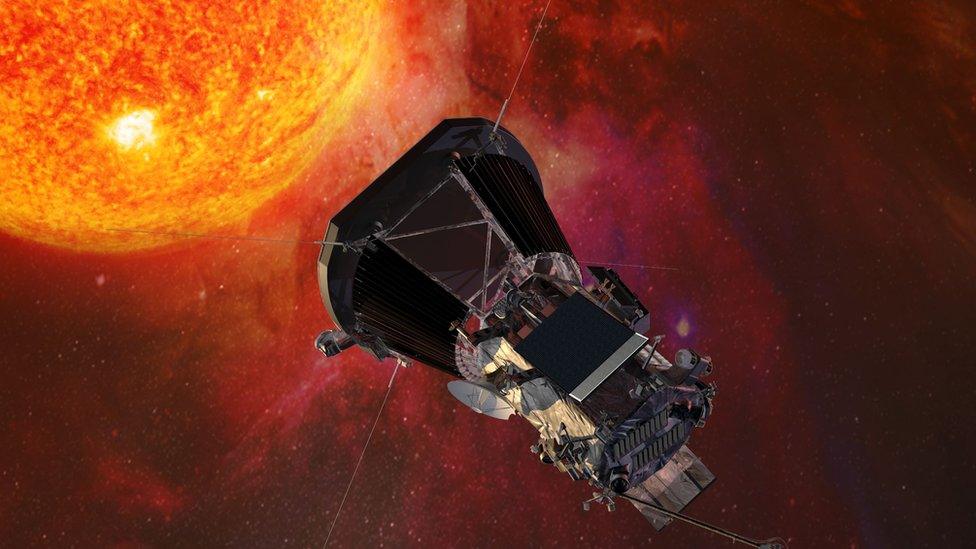The BepiColombo spacecraft is on a mission to Mercury
- Published

This colourful view of Mercury was produced by NASA's MESSENGER mission. These colours are not what Mercury would look like to the human eye, but the colours enhance the chemical and physical differences between the rocks that make up Mercury's surface.
The first European mission is heading to the planet Mercury, the smallest and least explored planet in the inner Solar System.
The European Space Agency and the Japanese Aerospace Exploration Agency have been working together to build two spacecrafts called 'probes' that will measure the planet's environment at the same time.
Together, the probes are called BepiColombo, after a famous Italian scientist.
The BepiColombo spacecraft will study Mercury and the solar system
Getting to Mercury is not easy! A big challenge is that the Sun's gravity is huge, which makes it tricky to put a spacecraft into Mercury's orbit.
After launch, BepiColmbo must constantly brake, otherwise it will fly straight past the planet!
The spacecraft will fly past Venus twice on its journey, using its gravity to take out some of the speed.
In orbit around Mercury it gets very hot and very cold, 450 degrees Celsius on the sunny side and -180 degrees Celsius on the dark side!
The Japanese spacecraft will "barbecue roll" 15 times a minute to even out the heat, while the European one will use a multi-layer blanket and radiator for protection.
It will take seven years to arrive. Once it's there the BepiColombo scientists are hoping to solve many of Mercury's mysteries.
Among the puzzles is the giant iron core that makes up 60% of the planet.
Scientists hope the mission will tell them more about how the solar system was made and give them a better idea about the potential for life on exoplanets, which are planets found orbiting other stars.
Scientist Joe Zender explains, "If we want to understand our Earth and how life can [begin] on Earth and maybe on other planets we have to understand our solar system."
- Published4 October 2018

- Published8 August 2018

- Published12 August 2018

